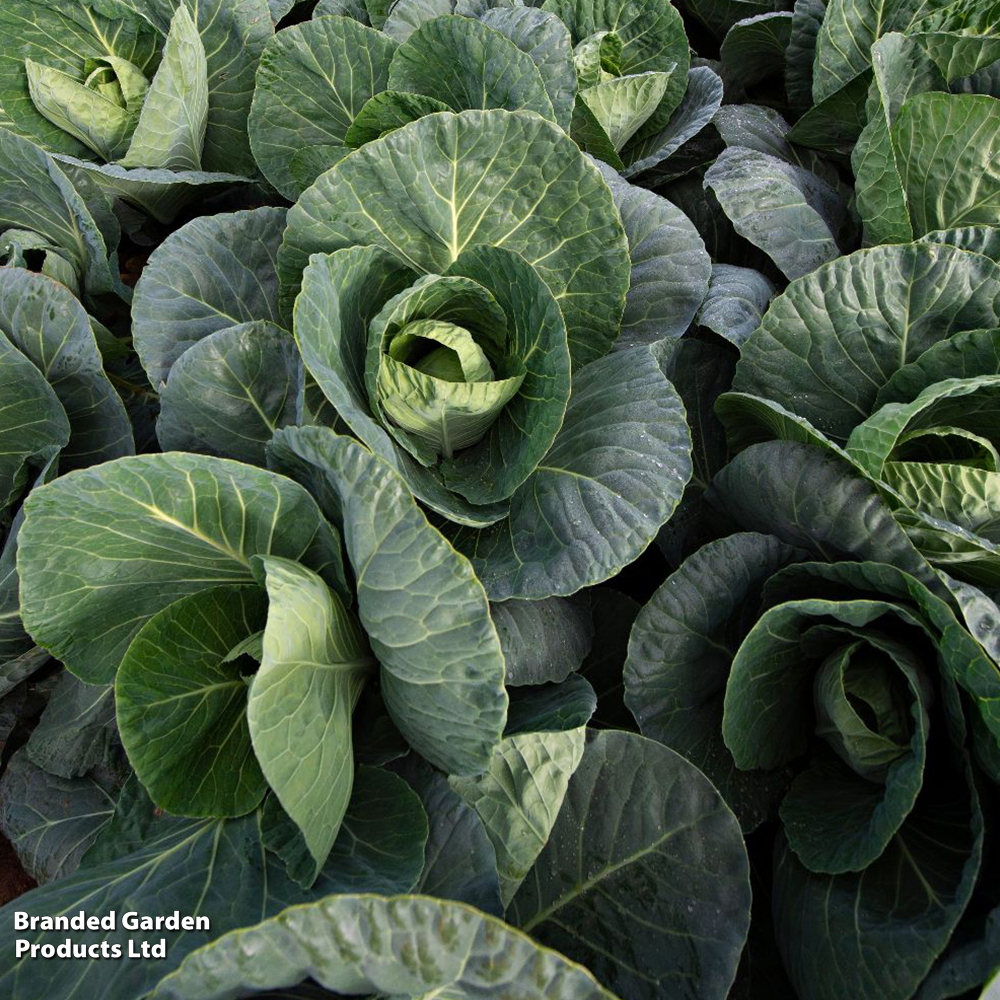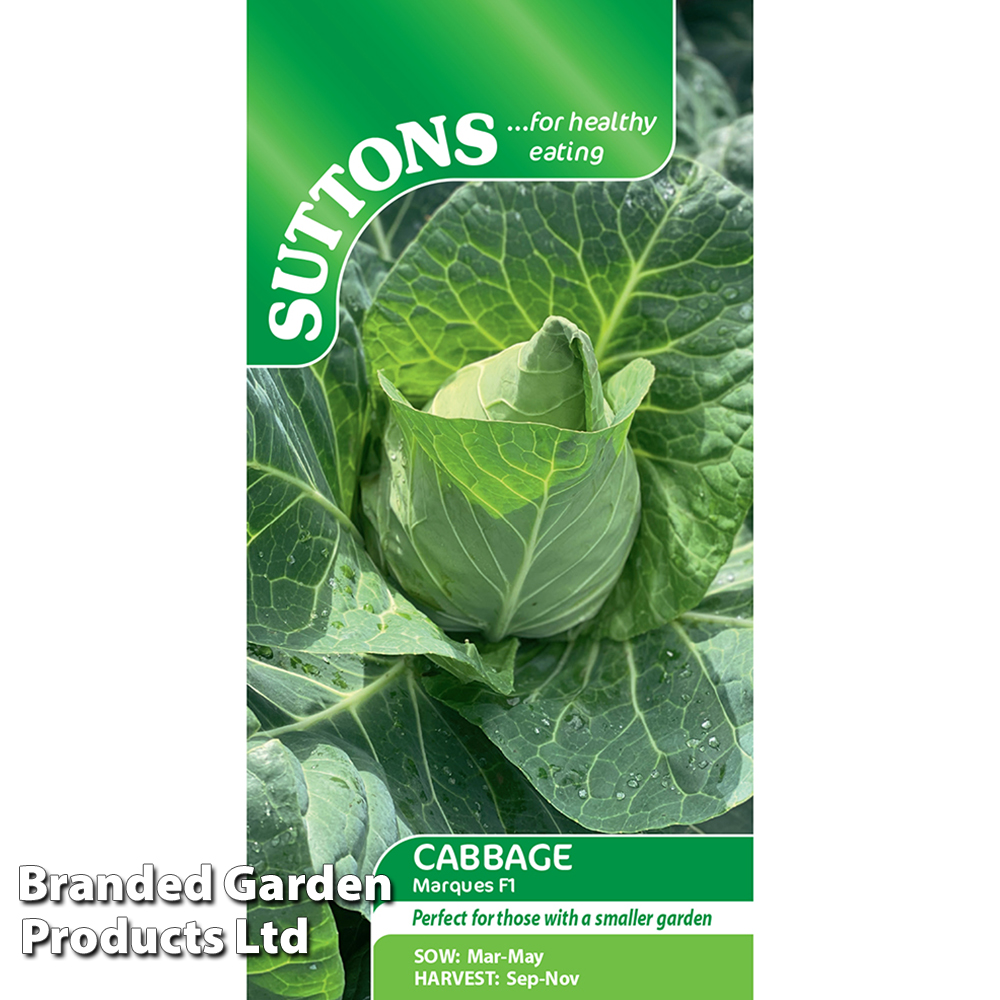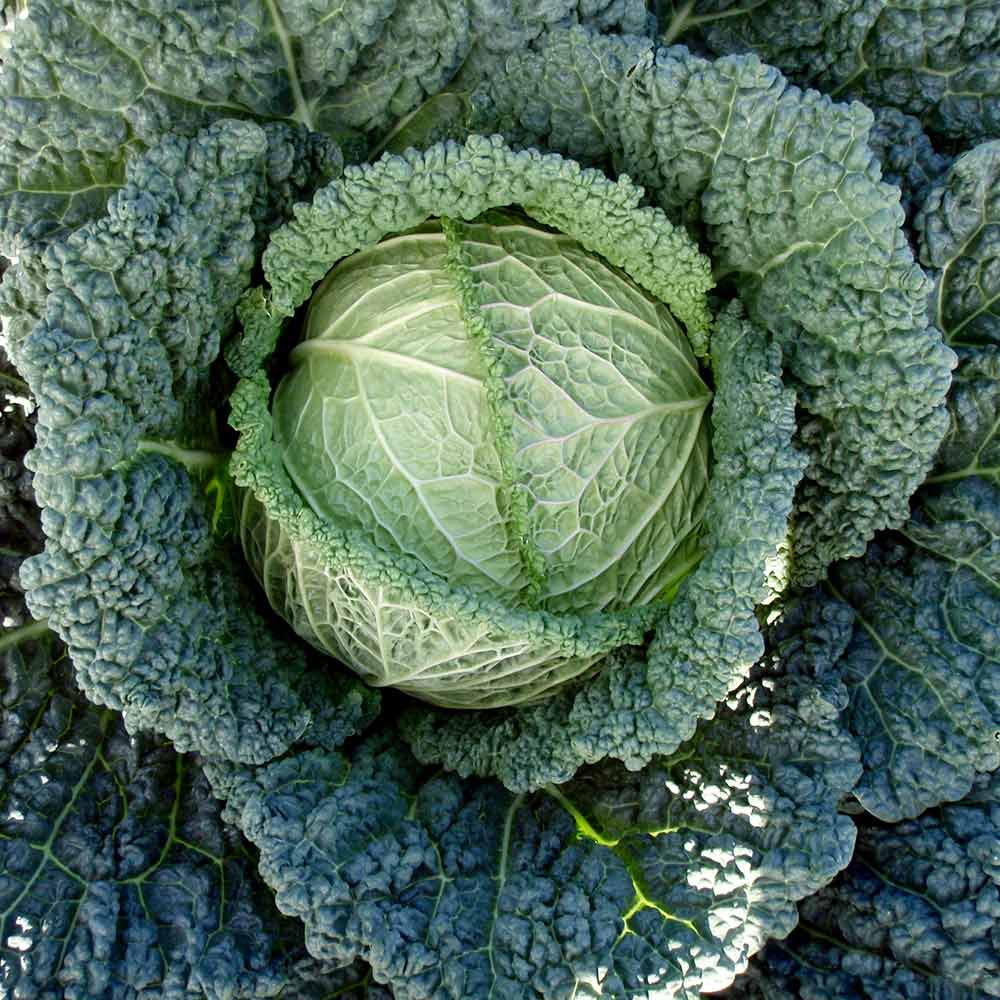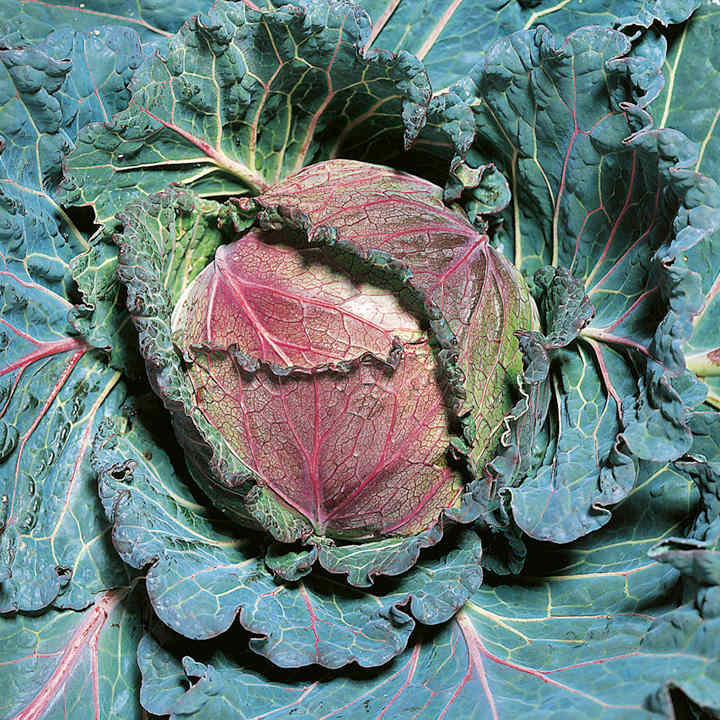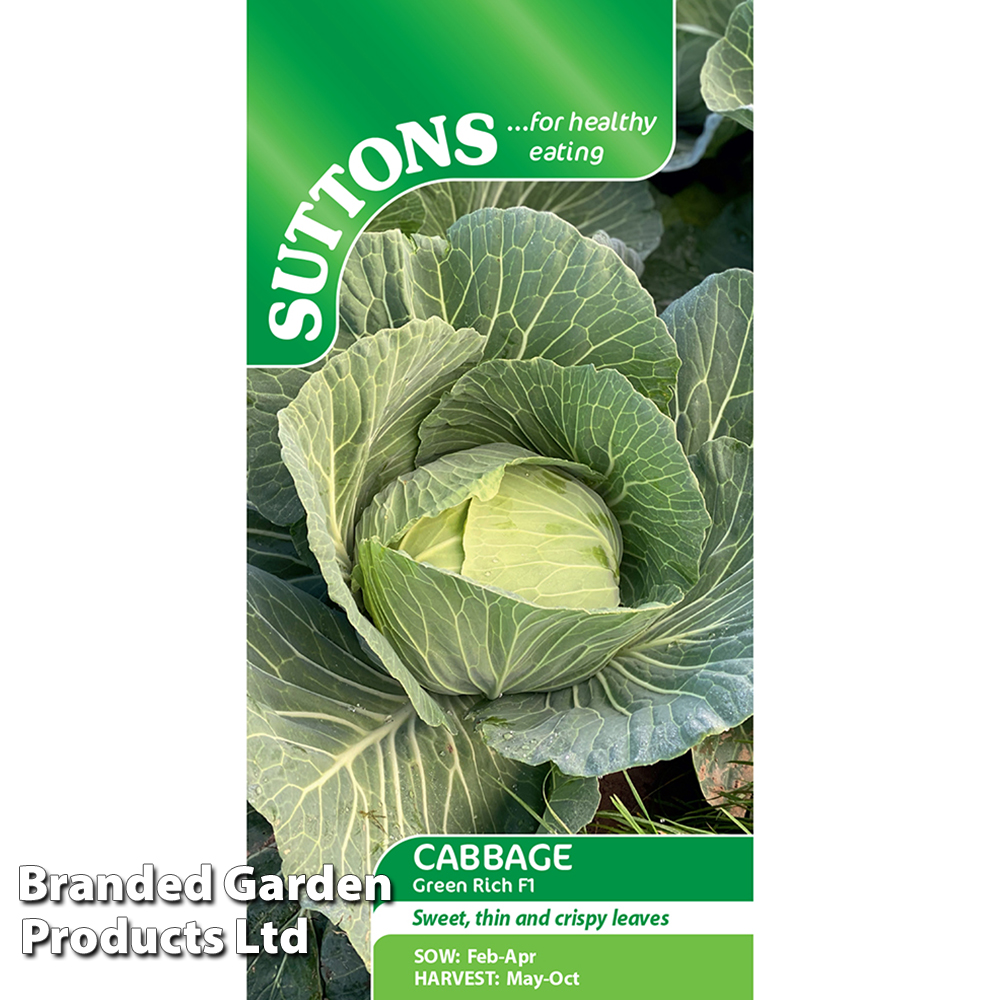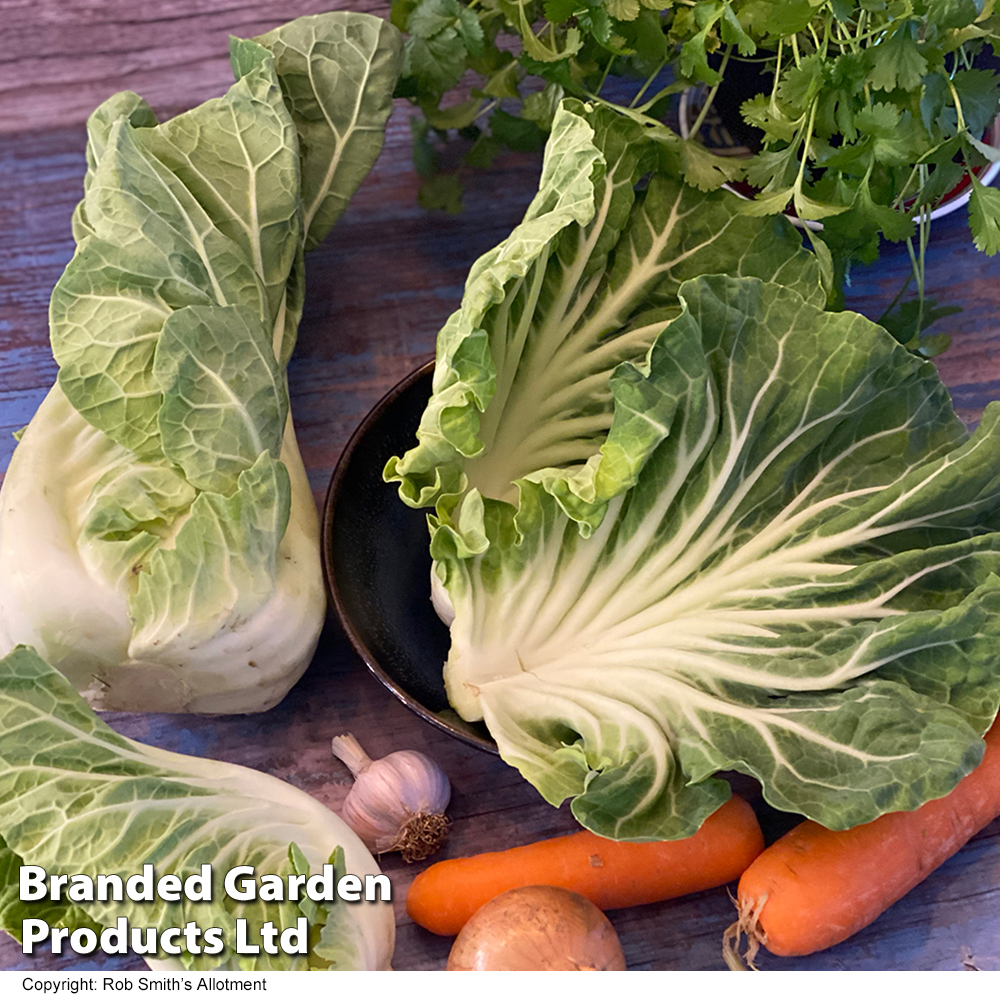This large, non-heading cabbage is a versatile, long-season crop that is high in nutrition. Collard ‘Hi-Crop’ can be harvested as a whole, looseleaf cabbage or picked for cutting and coming again, removing leaves from the center as needed, for spring or autumn greens. The large, blue-green, textured leaves have a pleasant flavor and are produced on vigorous plants that are slow to bolt. 60 days to maturity, 40 cm (16″) tall. Spread 50cm (20″).
Sowing Information
Sow summer cabbage indoors seed from February to May. Alternatively direct sow outdoors from late March into a well prepared seedbed, for transplanting to their final positions later on. Sow at a depth of 13mm (½”) and distance of 23cm (9″) between rows.
Indoors, sow seed at a depth of 12mm (½”) in trays of free-draining, seed sowing compost and cover with a layer of vermiculite. Place in a propagator or seal container inside a plastic bag at a temperature of 20-25C (68-77F) until germination which takes 4 -7 days. Once germinated, grow Cabbage plants on in cooler conditions until all risk of frost has passed and plants are large enough to be transplanted with 2-3 true leaves.
Gradually acclimatise them to outdoor conditions over 7 – 10 days before planting cabbage in moist, rich, well drained soil in full sun. A fertile soil is essential as cabbages require high levels of nitrogen. Prepare the soil in early spring by adding plenty of well rotted farmyard manure to the soil to improve its structure and fertility. Apply lime to acid soils to reduce the acidity and lessen the risk of clubroot. Plant cabbages at a distance of 50cm (20″) apart and cover with a protective netting or fleece to prevent attack from birds and insects. Place a collar around the stem of each plant to prevent cabbage root fly attacks. Water the plants thoroughly after planting.
For virtually year round crops, a second sowing from August to September can be made for overwintering.


